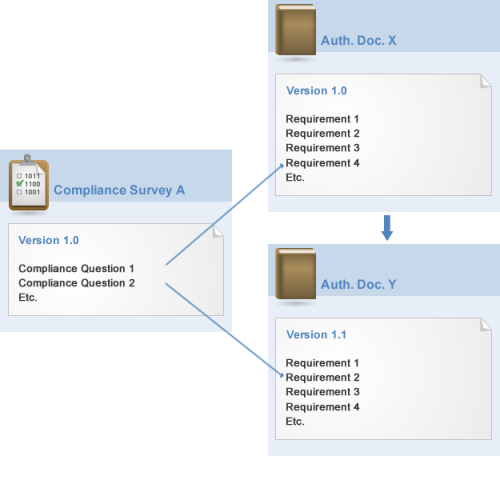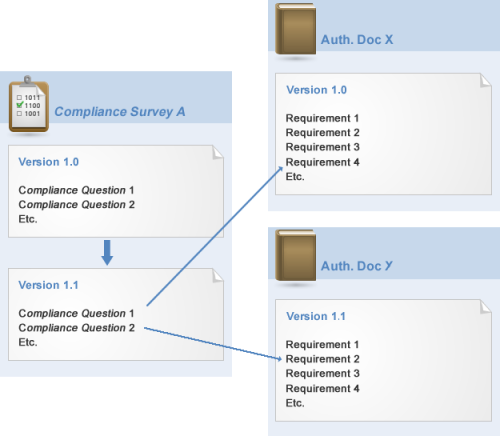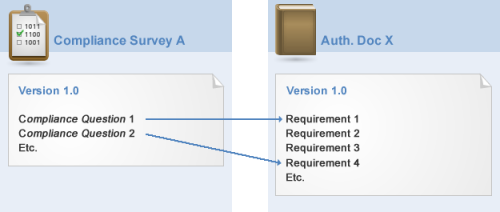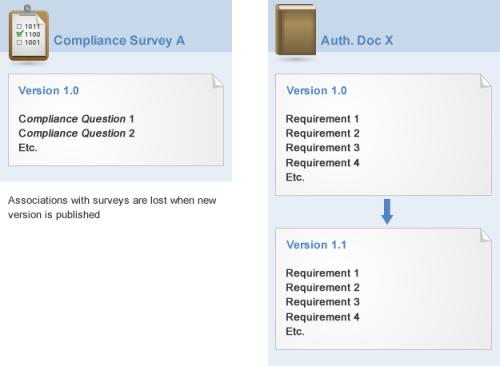
Let’s say there is a published compliance survey A version 1.0, and there are one or more Compliance questions in this survey associated with one or more requirements from published authoritative documents X and Y (see figure below).

In compliance projects, version 1.0 of compliance survey A can be used, since it is a published version, and version 1.0 and 1.1 of authoritative documents X and Y can also be used in the same project. Note that when adding requirements to the scope of a compliance project, there must be at least one published compliance survey containing one or more Compliance questions that are associated with the requirements added to the scope of the project. That is, if there is not at least one compliance survey with at least one Compliance question associated with the requirements selected, you will not be able to add objects to the scope of the project.
When you want to edit survey A to correct or update it, a new version of it will be generated when it is published. This new version will automatically maintain its associations with versions 1.0 and 1.1 of authoritative documents X and Y (see figure below).

Both version 1.0 and version 1.1 of survey A, as well as authoritative document X and Y, can be used in compliance projects, since all these versions are published. The existing associations between Compliance questions and requirements are preserved when the survey is edited and a new version is published.
Now consider compliance survey A version 1.0, which has one or more Compliance questions associated with one or more requirements from authoritative document X (see figure below).

Compliance survey A version 1.0 and authoritative document X version 1.0 can be used in compliance projects, since both of these versions are published.
If authoritative document X is edited, the system will generate a copy of it so that the modifications can be made. When the modifications or updates are complete, a new version of the authoritative document will be published. In this case, the associations that existed between survey A version 1.0 with the requirements from version 1.0 of authoritative document X will be lost (see figure below).

In this case, a new compliance survey must be created and published for version 1.1 of authoritative document X before it can be used in projects. Keep in mind that for compliance projects, the only way to analyze compliance with requirements from authoritative documents is through surveys, based on which interviews are generated. The responses to compliance questions in interviews automatically generate compliance metrics for the requirements. Thus, with no published surveys, compliance with requirements from an authoritative document cannot be analyzed in a project.